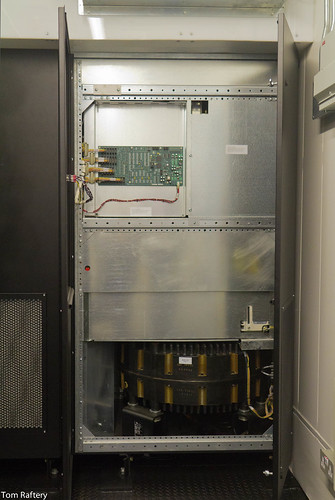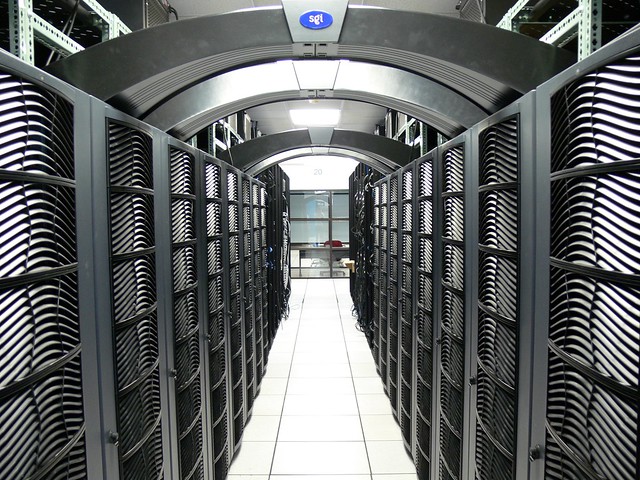I attended the 2011 DataCenterDynamics Converged conference in London recently and at it I chatted to a number of people in the data center industry about where the industry is going.
One of these was Active Power‘s Graham Evans. Active Power make flywheel UPS’s so we talked about the technology behind these and how they are now becoming a more mainstream option for data centers.
Tom Raftery: Hi everyone, welcome to GreenMonk TV, we are at the DCD Converge Conference in London and with me I have Graham Evans from Active Power. Graham you guys, you make the spinning UPSs.
Graham Evans: That?s right yes the flywheel UPSs, kinetic energy. So behind us here we have our powerhouse. So what we found with the flywheel UPS is because of its high density environment, the fact it doesn?t need cooling the fact that it is really suited to a containerized environment we?ve put it in a powerhouse to show the guys in DCD to show the benefits that we can provide from a systems perspective.
Tom Raftery: So what the flywheel UPS does is it takes in electricity, while the electricity is running, spins wheels really, really fast and then if there is a break it uses that kinetic energy to keep the system up.
Graham Evans: Not quite, so the flywheel itself is spinning all the time as an energy storage device. The UPS system is primarily conditioning the power. So as the power comes through it?s a parallel online system, all of the kilowatts flow through to the load and our converters regulate that power to make sure you get UPS grade output through to your critical load. At the same time the flywheel is spinning it?s sat there as a kinetic energy store ready to bridge the gap when its required to do so.
So voltage or mains fails on the input, the flywheel itself changes state instantaneously from a motor to a generator and we extrapolate that kinetic energy through some converters to support the load, start our diesel engine, and that then becomes the primary power source through to the system.
Tom Raftery: And you got the diesel engine in fact built into the system here, it?s on the right hand side as we are looking at here. So there is a reason that you have your own diesel engine kind of fitted into in there.
Graham Evans: Yes, so we are not holding into one particular diesel engine manufacturer so what we do as a complete system is designed as a critical power solution. So the thought really is from a client point of view we can be flexible in terms of their requirements. We can size the engine to support the UPS load only or maybe we can pick up some mechanical loads as well. We make some enhancements to the diesel so we have our own diesel controller to start the diesel quickly. We have our own product we call GenSTART,which allows us to have a UPS backed starter mechanism to the system so we can use that UPS power to start it.
Tom Raftery: And that?s important because the flywheel don?t stay up as long as say a battery bank.
Graham Evans: Its important because this type of loads that we are supporting need that quick power restorations, so from a UPS point of view we need to restore or keep power instantaneously that?s the job of a UPS, no break power supply, but we also find with mechanical loads certainly in high density datacenter environments we need to restore the short break mechanical loads very quickly. So the system you see here is able to do that. We continuously support the UPS load and we can bring on the cooling load ten seconds afterwards. So very fast starting, very robust system.
Tom Raftery: And the whole flywheel UPS idea is relatively new comer to the datacenter environment?
Graham Evans: Not especially I think it feels like that sometimes but we have been around for 15 years as a business, we have 3000 plus installations worldwide, but certainly we are not as common place as some other technologies but we are probably one of the fastest growing companies globally. So, yeah not brand new 15 years in business, but yeah the concept?s really taken off and it?s been really successful for us.
Tom Raftery: Cool. Graham that?s been fantastic, thanks for coming to the show.
Graham Evans: No problem, thank you, cheers.




